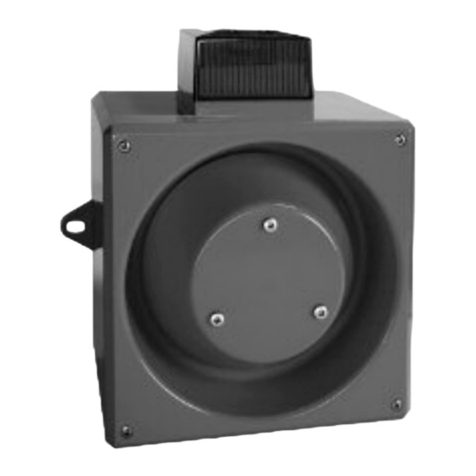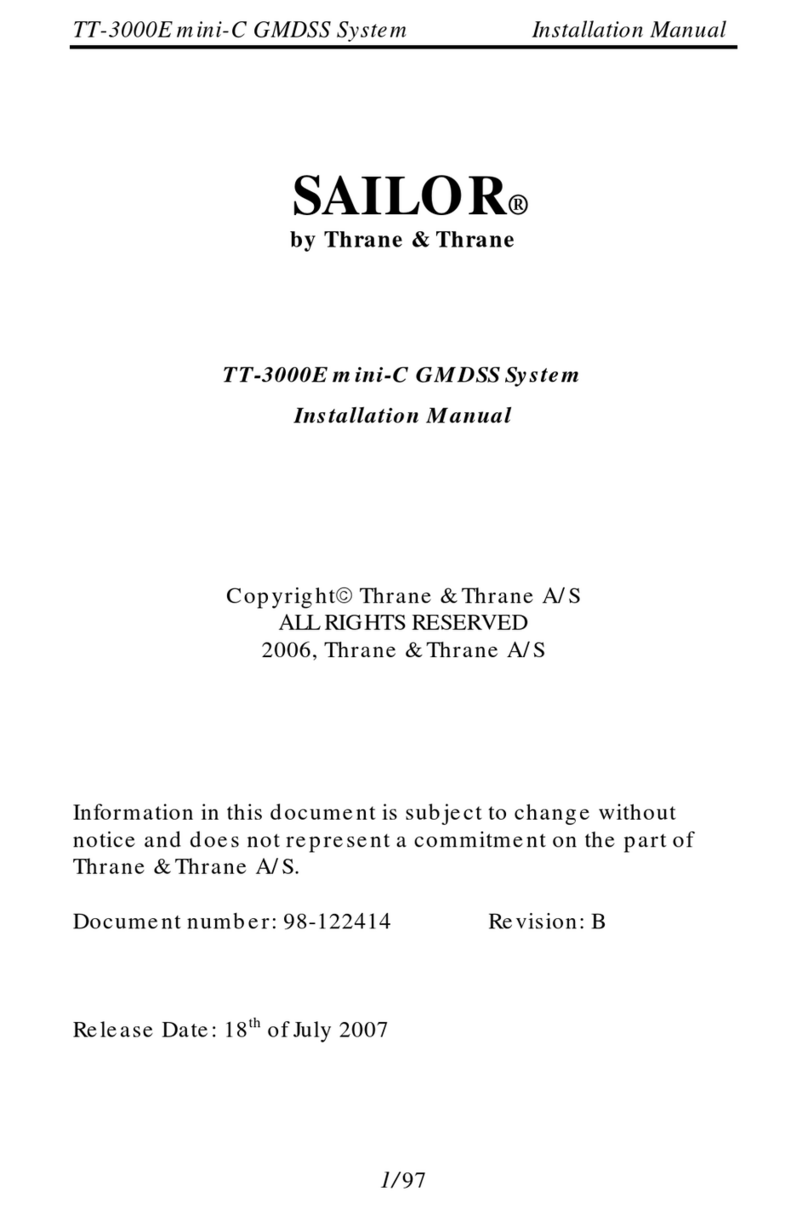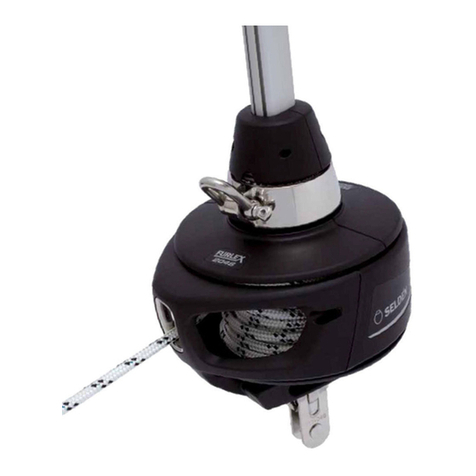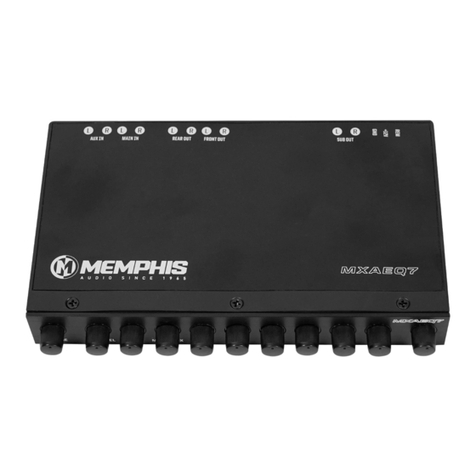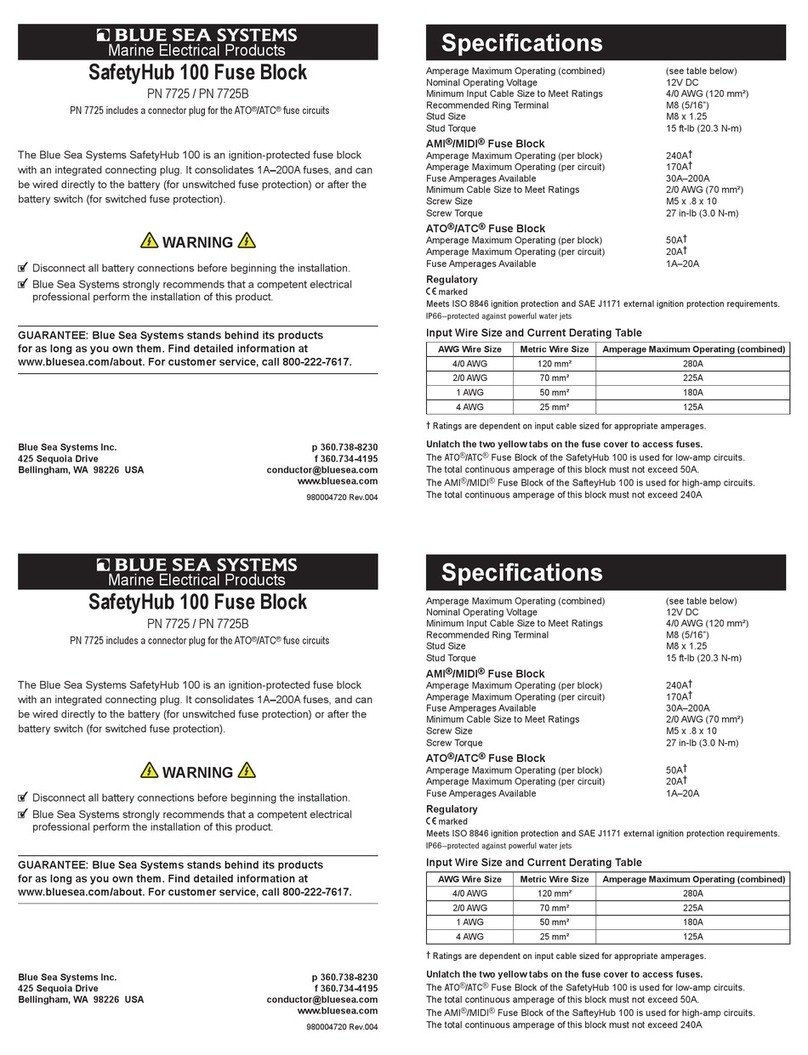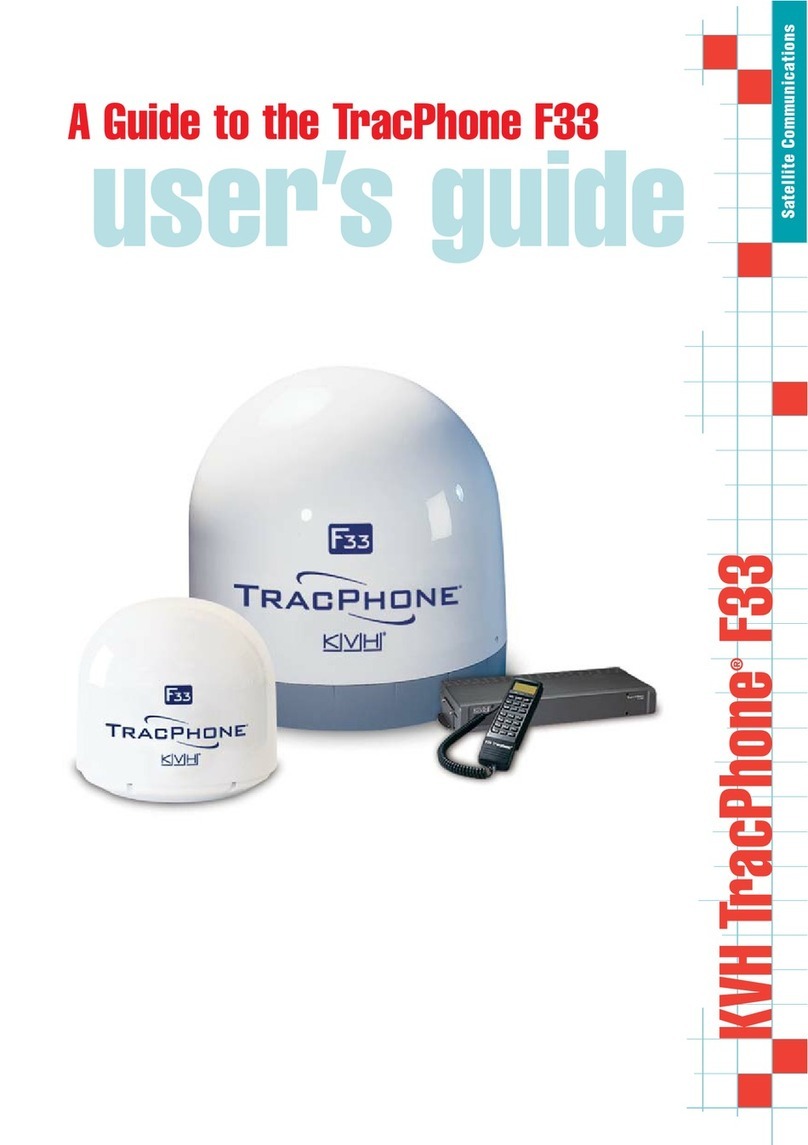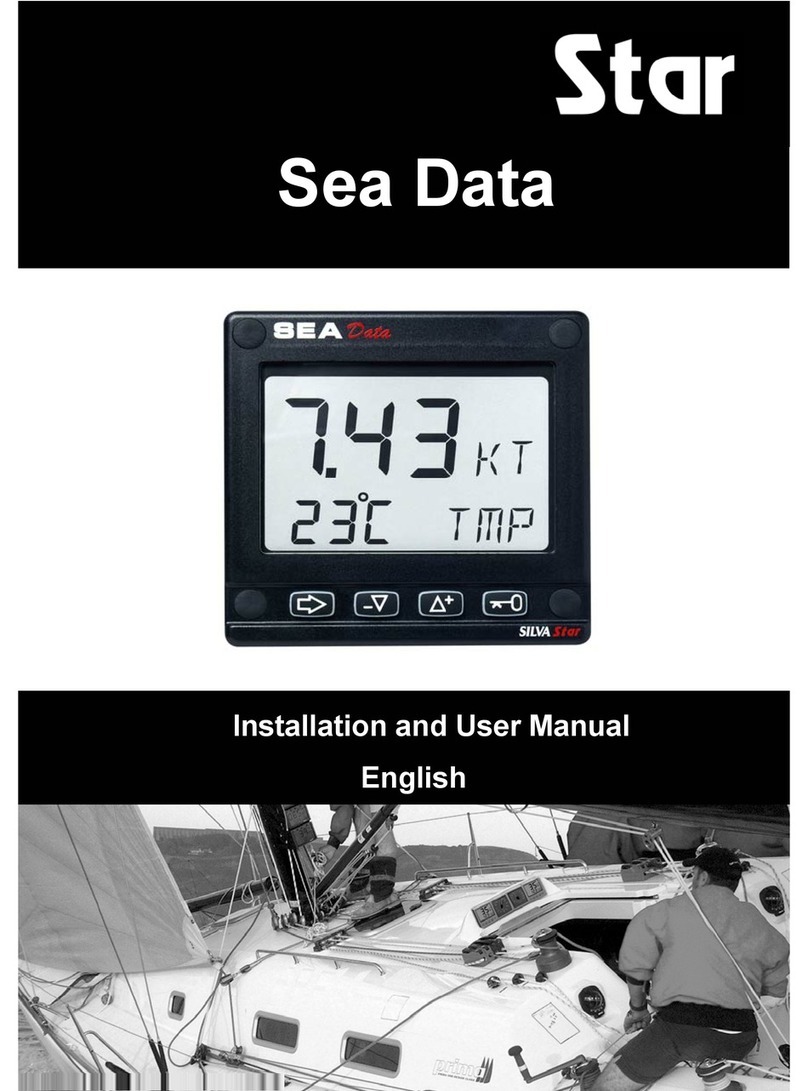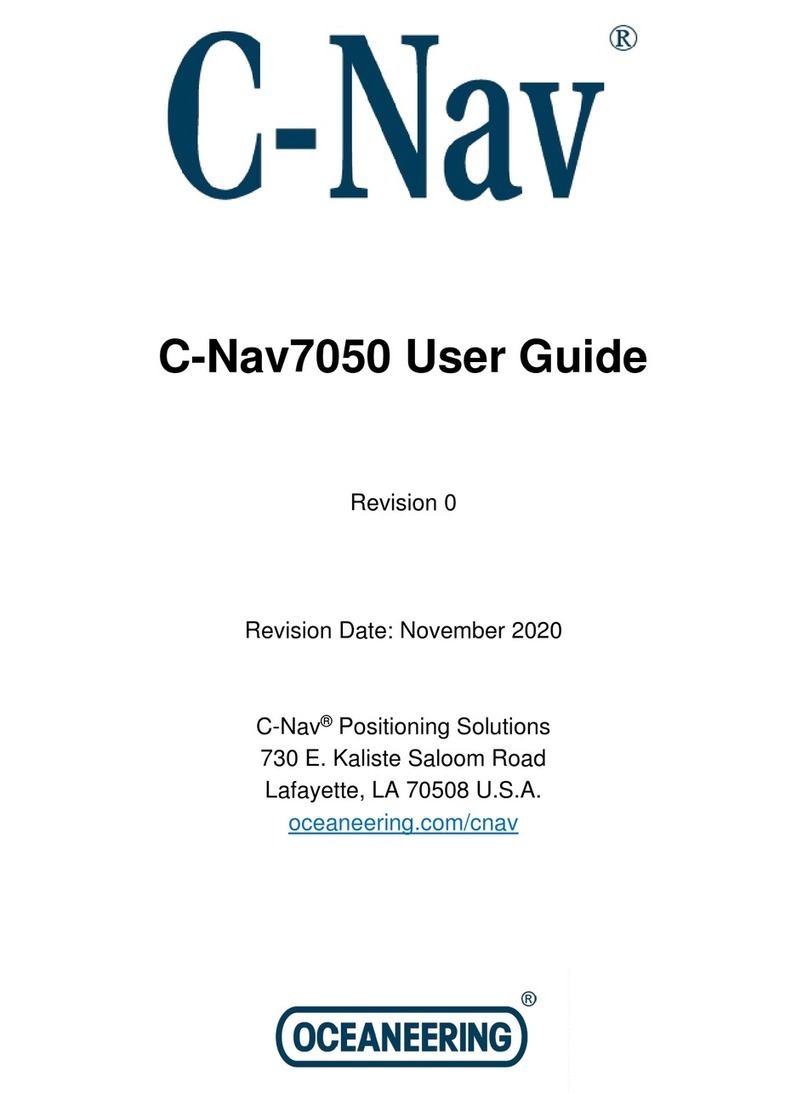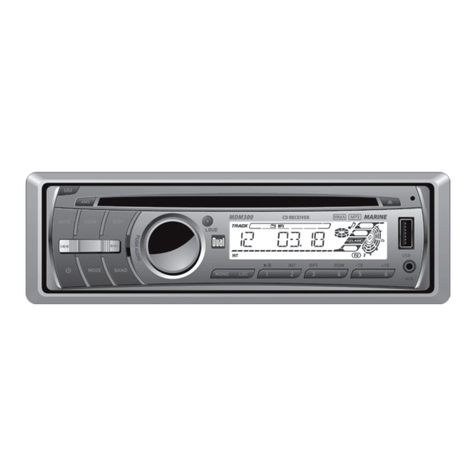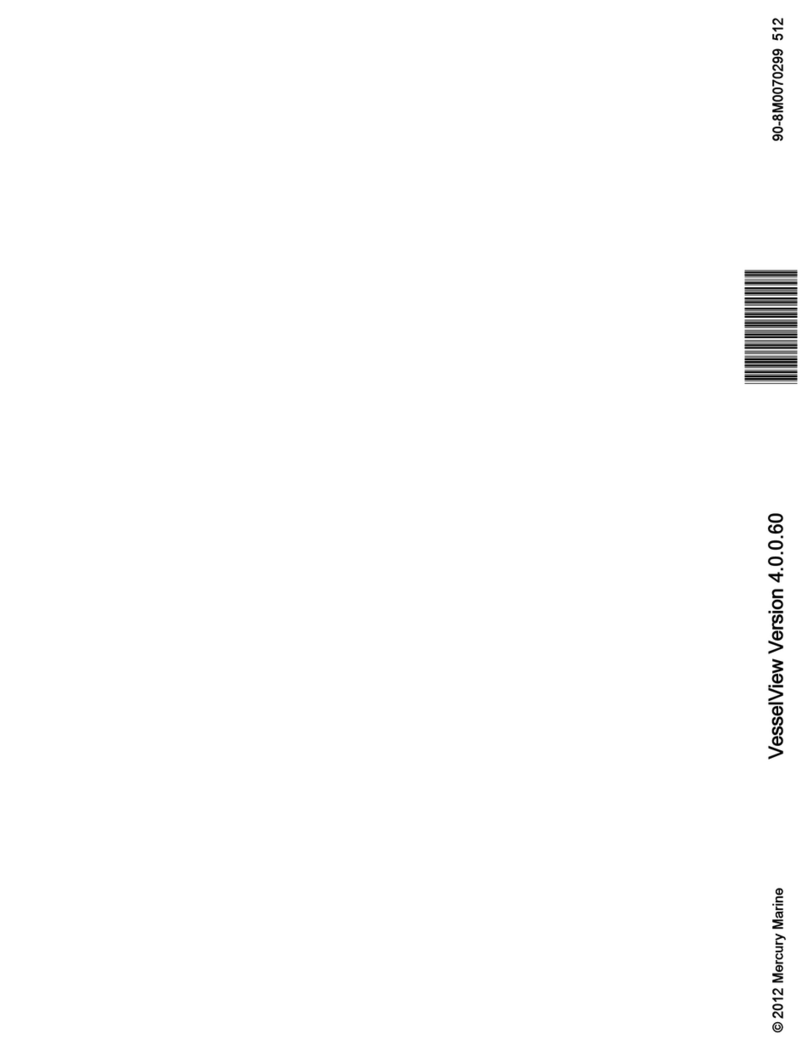ETSI E-Band User manual

ETSI White Paper No. 9
E-Band and V-Band -
Survey on status of
worldwide regulation
First edition –June 2015
ISBN No. 979-10-92620-06-1
Author:
Mario Giovanni Luigi Frecassetti

E-Band and V-Band - Survey on status of worldwide regulation
1
About the authors
Mr. Mario Giovanni Luigi Frecassetti
Rapporteur, Alcatel-Lucent , mario_giovanni.frecassetti@alcatel-lucent.com
Mr. Bjorn Backemo
Contributor, Ericsson, bjorn[email protected]m
Ms. Debora Gentina
Contributor, Huawei Technologies, debora.gentina@huawei.com
Mr. Gabriele Ferrari,
Contributor, Vodafone Italy, Gabriele.FERRARI@vodafone.com
Mr. Jonas Edstam
Contributor, Ericsson, jonas.edstam@ericsson.com
Mr. Leiba Yigal
Contributor, Siklu, yigal@siklu.com
Mr. Nader Zein
Mr. Pietro Nava
Contributor, Huawei Technologies, [email protected]
Mr. Paolo Volpato
Contributor, Alcatel-Lucent, paolo.volpato@alcatel-lucent.com
Mr. Roberto Macchi
Contributor, SIAE, Roberto.Macchi@siaemic.com
Mr. Mike Geen
Contributor, Filtronic, [email protected]m

E-Band and V-Band - Survey on status of worldwide regulation
2
Contents
About the authors 1
Contents 2
Executive Summary 4
Introduction and Scope 5
Overview on Regulation status 6
General background 6
Terminology and definitions 6
Band allocations and designations 6
Access to the frequency bands 7
Authorization regime 7
Block assignment/auction regimes 8
Licensing fees 8
V-Band case 10
Regulation overview 10
International regulatory documentation for Fixed links (57-66 GHz) 10
International regulatory documentation for Fixed links (48,5-57 GHz) 12
Other relevant “non-Fixed Service (FS)” international regulatory documentation 12
Regulatory emissions limitations 13
V-Band country by country overview 15
E-Band case 18
Regulation overview 18
FCC 18
CEPT/ECC 19
ITU-R 20
ETSI standards for equipment 21
E-Band country by country overview 22
Special case - OFCOM UK 25
Conclusions 26
Appendix 27
A. Database 27

E-Band and V-Band - Survey on status of worldwide regulation
3
B. Database- Snapshot 28
V-Band 28
E-Band 28
C. ITU Regions 29
D. Table of Frequency Allocation for V-Band and E-Band 30
E. US - FCC Regulation For E-Band 32
F. CEPT: Technical Background For Self-Coordination 33
G. Examples of E-Band Fees 34
References 36

E-Band and V-Band - Survey on status of worldwide regulation
4
Executive Summary
Microwave
1
is undergoing fast and deep transformation. Current and future mobile networks impact
backhauling in several ways. The main drivers for change are the huge increase of capacity and
enhanced coverage, together with new topologies where access and backhaul platforms should cope
with ultra small hot-spots, strengthening the need to exploit available spectrum as much as possible and
in the most appropriate way.
In particular, the first two drivers, in urban and sub-urban environments, lead to a new and
revolutionary approach for microwave backhauling. Backhauling needs to satisfy apparently conflicting
requirements such as increase of capacity and spectrum efficiency, very low power consumption, very
low environmental impact, in short, to reduce total cost of ownership to a minimum to make the
business case of operators turn positive. Capacity is increasing more and more while distances decrease
and base stations get nearer to subscribers. Current traditional frequencies below 50 GHz are already
very crowded and exploited, hence the need to use higher frequency bands in future-proof networks.
Due to technology evolution and availability of wide channel bandwidths, the use of frequency bands in
the V-Band
2
and E-Band2appear to be of interest for the current and future needs for backhaul
networks. The huge interest in this part of the spectrum in the last decade is also demonstrated by three
European Framework Programme 7 (FP7) research projects: E3NETWORK [26] addressing mainly a
backhaul solution in E-Band, MiWaves [27] addressing backhaul and access solutions in 60 GHz and 71-
86 GHz Bands and IPHOBAC-NG [28] addressing integration of mm-wave radio and photonics for
backhaul and other purposes.
E-Band and V-Band have different spectrum characteristics and nature:
V-Band is characterized by a continuous block of 9 GHz of spectrum between 57 and 66 GHz,
oxygen absorption that implies immunity to interference and enhanced frequency re-use, a
favourable licence regime, mostly unlicensed or light licensed (country dependent).
E-Band: since 2000, regulators have made available high frequency bands at 71-76 GHz and 81-86
GHz. E-Band enables gigabit-per-second data rates given the huge amount of available spectrum
(10 GHz) without any oxygen absorption, thus allowing longer distances compared to V-Band.
Given the different nature of the two frequencies, different scenarios might be foreseen for each of
them, including macro and small cell backhaul, front-haul applications, Line of Sight (LoS) today and
most probably future near Line of Sight (nLoS) or No Line of Sight (NLoS).
Nonetheless, regulations for these two frequency bands aren’t always already decided, opened and
planned and, especially for the V-Band case, the related portions of the spectrum differ from country to
country making it very fragmented.
1
Microwave in this contest refers to the wireless technology mainly used for mobile backhauling applications using frequency
bands ranging from 4 to 86 GHz.
2
Definition of V-Band and E-Band is provided later

E-Band and V-Band - Survey on status of worldwide regulation
5
Introduction and Scope
The main scope of this document is to provide an updated overview on the state of regulation and
spectrum allocation of both V-Band and E-Band, mainly for the case of fixed service.
In this context, the term regulation includes:
The international standards from bodies such as ITU or ETSI and regulations from organizations,
such as ECC or FCC.
The rules at national level which, for the scope of the present analysis, can be considered as the
key source of information as they reflect the national status in several countries both inside and
outside the European Union.
Given the market need to effectively exploit both E-Band and V-Band frequency bands, an exhaustive
investigation has been carried out among administrations and regulatory bodies to gather allocation
status, licensing regime and other relevant data.
The analysis of the data collected through that investigation has been performed by the ETSI Millimetre-
Wave Transmission Industry Specification Group.
The outcome of the analysis is described in two relevant deliverables:
The present white paper
A database included in the white paper, whose structure is discussed in Appendix [A], in which the
updated country by country allocation is collected

E-Band and V-Band - Survey on status of worldwide regulation
6
Overview on Regulation status
General background
Sometimes there is confusion and controversy about microwave frequency band letter definitions, since
there is no unique view in literature. Each letter definition is widely variable depending on the
standardization body that introduced it in the past.
For the purpose of this document:
V-Band is intended to span from 57 GHz to 66 GHz, where the oxygen absorption is significant;
however, also the lower portion spanning from 48.5 GHz to 57 GHz can be generally included in
the V-Band definition.
E-Band is intended to cover 71-76 GHz and 81-86 GHz.
Terminology and definitions
Many of the concepts related to spectrum use do not have unique definitions endorsed in ITU
vocabulary; general concepts are likely to be understood by experts, but slight differences in
terminology and their interpretation are present among regional organizations (ECC, FCC etc.) and
individual administrations.
This clause tries to propose, as far as possible, the best definition and variant of terminology for the
regulatory processes to access the spectrum.
Band allocations and designations
Access to the radio spectrum is based on the Table of Frequency Allocations of the International
Telecommunications Union (ITU) Radio Regulations, where defined categories of radio service are
allocated frequency bands in different parts of the spectrum and for different ITU regions [C]. ITU table
allocation for V-Band and E-Band are reported in Appendix [D].
The spectrum allocation can be on either exclusive, shared, primary or secondary basis. Due to scarcity
of the frequency spectrum, many bands are allocated for more than one radio service and are,
therefore, shared. Spectrum sharing studies aim to identify technical or operational compatibilities that
will enable radio services to operate in the same (or adjacent) frequency bands without causing
unacceptable interference to each other. Often, sharing becomes possible when limits are placed on
certain system parameters for example, antenna radiation patterns, transmission power etc. Decisions
are taken at the national level on the purpose or purposes for which particular frequencies will be used.
These decisions are reflected in the International and National Tables of Frequency Allocations.
Some keywords are given here:
Allocation (to a Service): Each band has a general allocation to one or more “services”; the allocation
may be worldwide or regional, but each administration can autonomously decide differently.
Radio Service: The radio services (e.g. Fixed, Mobile, Radiodetermination, etc.) are all listed in the
Radio Regulations.
Radio application: Under a service there might be several “applications” (e.g. point-to-point, point-to-
multipoint are different applications under fixed service). To be specifically used by a radio application
the band should be “designated/dedicated”to that application.

E-Band and V-Band - Survey on status of worldwide regulation
7
Designation/dedication (to a radio application): The specific use of a band or portion of band for one
radio application within the allocated service (e.g. some fixed service bands are
“designated/dedicated” to point-to-point only, point-to-multipoint systems cannot obtain access, and
vice versa).
Access to the frequency bands
There are two major methodologies for giving access to the spectrum:
Authorization regimes
Block assignment/auction regimes
Authorization regime
The administration decides, band by band and by radio application which type of licence is required for
operating a radio; Figure 1 (reprinted from [25]) summarizes the types of licensing generally used by
administrations.
Figure 1: Generic subdivision of authorization and licence regimes
Individual licensing
3
- this is the conventional link-by-link coordination, usually made under an
administration’s responsibility; sometimes, the administration delegates this task to the operators, but it
keeps control of the national and cross-border interference situation. This is currently the most used
method for point-to-point (P-P) link networks.
Light licensing - The most common understanding, when fixed P-P links are concerned, refers to a link-
by-link coordination, under users’responsibility, reflected in the definition given by ECC Report 80 [25]
as: “A ‘light licensing regime’ is a combination of licence-exempt use and protection of users of
spectrum. This model has a ’first come first served’ feature where the user notifies the regulator with
the position and characteristics of the stations. The database of installed stations containing appropriate
technical parameters is publicly available and should thus be consulted before installing new stations.”
From the spectrum usage point of view, this method is, in principle, equivalent to individual licensing.
The potential risks of errors or misuses in the coordination process might be higher because of the
number of actors involved, some of them also not sufficiently technically skilled.
3
Sometimes also referred to as “traditional licensing”

E-Band and V-Band - Survey on status of worldwide regulation
8
Obviously, when light licensing is intended as only requiring notification/registration (i.e. rightmost cell
under light licensing in figure 1), the method is much less effective and, with respect to the licence
exempt case, offers the only advantage of having the database available to help resolve claimed
interference cases.
Licence exempt - This method offers the most flexible and cheapest usage, but does not guarantee any
interference protection
4
. It is most popular in specific bands (e.g. 2.4 and 5 GHz) where short range
devices (SRD) are allocated, but fixed service applications may also be accommodated; in addition, it is
often used in bands between 57 GHz and 64 GHz but traditionally has been less attractive there due to
the unfavourable propagation attenuation.
Block assignment/auction regimes
Block assignment - the assignment might be made through licensing (renewable, but not permanent) or
through public auction (permanent). This is most common when fixed wireless access (point to multi-
point, P-MP) is concerned and the user is usually free to use the block at best to deploy its network; in
some cases, there might even be no limitation to the wireless communication methods used in the block
(e.g. P-P and/or P-MP, terrestrial and/or satellite or any other innovative technology or architecture). In
the most popular bands for this method, ECC recommendations exist suggesting intra-block protection
guidelines in terms of guard bands or block-edge masks (BEM), see: [5]. For some frequency bands this
method is considered the best compromise between efficient spectrum usage and flexibility for the
user.
Licensing fees
The above licensing conditions do not have, in general, specific linkage to the fees paid for the use of
frequency.
In most cases the right of use depends on the spectrum management department of an administration
(through appropriate regulations), while the fees usually depend also on the “economic ministry”
(typically regulated through higher level laws).
Therefore, in some cases, there might be little correlation between the licensing procedure and the
related fee; several examples of “standard” link-by-link fees applied to unplanned/uncoordinated links
exist (among which V-Band is typically considered).
One of the most popular methods to define fees for E-band usage is comprised of two main
components, namely:
The Application Fee, and
The Frequency Management Fee.
Simplifying these two components a lot gives the following:
4
This method, in some scenarios, can be considered as the most efficient use of the spectrum, as users are forced on the one
hand to minimize generated interference and on the other hand, to maximize their immunity to interference.

E-Band and V-Band - Survey on status of worldwide regulation
9
Application fee –this is a one-time charge due for the approval of frequency assignment. The
application fee should cover the cost of the initial activities performed in assessing the suitability
of the frequency to be used for the intended application.
Annual Frequency Management fee –this is a recurrent fee payable annually to cover the right to
use a scarce resource and the cost of the activities performed to safeguard the use of the
frequencies. This part can depend on a lot of parameters, such as frequency band, channel size,
capacity, congested region, hop length.
In general, a licence fee depends on channel bandwidth and frequency band. Other parameters that can
affect the fee calculation are for instance the number of transmitters and geometric considerations
(area). The use of incentives is frequent to promote use of higher frequencies.
Our survey confirmed that licence fees vary a lot from country to country. For the E-Band case, we have
provided a high level comparison of the fees due in given cases.
In Appendix [G] a number of real methods used by administrations to determine fees are reported.

E-Band and V-Band - Survey on status of worldwide regulation
10
V-Band case
The following clauses summarize the CEPT, ITU-R and USA regulations as they are the most
representative in the market; however, other national regulations are present and referred to in the
database.
The use of frequencies around 60 GHz has a long history. The 58 GHz band was in use already in the
early 1990’s in a few countries [31]. Spectrum regulations have evolved since then, from the initial focus
on the 57-59 GHz range [31, 32, 33, 34] that attracted some industry interest [35], the later addition of
the 64-66 GHz range [2] that did not attract any industry interest [15], to the latest added possibility for
a larger continuous 57-66 GHz range [1, 2, 12] that has attracted huge industry interest.
Figure 2: The older bands and the new wide continuous bands around 60 GHz
Regulation overview
International regulatory documentation for Fixed links (57-66 GHz)
The following are the European (broader CEPT area) “fixed links-specific” Recommendations for the use
of the upper part (see notes) of V-Band:
ECC Recommendation (09)01: “Use of the 57 –64 GHz frequency band for point-to-point fixed
wireless systems”[1]
ECC Recommendation (05)02 (2009): “Use of the 64 – 66 GHz frequency band for fixed service”[2]
Within this range, the band available for fixed applications is fragmented on country basis; in particular,
the range 63-64 GHz, being harmonized for “Intelligent Transport Systems” (ITS) applications (see after
the chapter ‘Other relevant “non-Fixed Service (FS)” international regulatory documentation’) is often
unavailable for fixed services.

E-Band and V-Band - Survey on status of worldwide regulation
11
This picture taken from EFIS system [30], provides an idea about the current implementation status of
these two recommendation in Europe.
ECC Recommendation (09)01
Use of the 57 - 64 GHz Band for P-to-P Fixed Wireless Systems
23 Cases reported
ECC Recommendation (05)02
Use of the 64-66 GHz Frequency Band for the Fixed Service
27 Cases reported
Figure 3: Implementation status of ECC(09)01 and ECC(05)02
The reason for having separate recommendations is the significantly reduced oxygen absorption impact
in the upper range, which may suggest different licensing conditions. However, the two
recommendations can be jointly used in a continuous 50 MHz elementary slot raster, for building up a
larger aggregated channel size. The only difference lies in the different emission levels permitted.
Frequency division duplex (FDD) and time division duplex (TDD) technologies are both possible and FDD
duplex separation is unspecified.
In some places, the band 59 to 61 GHz is used for NATO/military applications. Some administrations
have decided to reserve the band 61-61.5 GHz for Industrial, Scientific and Medical (ISM) (SRD) use only.
Similar recommendations are available in ITU-R:
ITU-R Recommendation F.1497-2 (2014 ): “Radio-frequency channel arrangements for fixed
wireless systems operating in the band 55.78-66 GHz”[12]
where bands 55.78 –57 GHz, 57 –64 GHz and 64 –66 GHz are treated in different annexes.
In USA, the FCC regulates the band and 57-64 GHz is included in:
47 C.F.R. part 15 “Radio Frequency Devices” (15.255) [18]
Therefore, the FCC recommendation is not specific for fixed links only but it covers any generic
“intentional radiator”.

E-Band and V-Band - Survey on status of worldwide regulation
12
International regulatory documentation for Fixed links (48,5-57 GHz)
Even if, at the date of publication of the present document, they have less importance due to lack of
basic RF components on the market, the following are the European (broader CEPT area) “fixed links-
specific” recommendations for the use of the lower part of V-Band:
ERC Recommendation 12-11 (2015): “Radio frequency channel arrangements for Fixed Service
systems operating in the bands 48.5 to 50.2 GHz / 50.9 to 52.6 GHz”
ERC Recommendation 12-12 (2015): “Radio frequency channel, arrangement for Fixed Service
Systems operating in the band 55.78 to 57.0 GHz”
ITU-R Recommendations cover only two portions of the above bands:
ITU-R Recommendation F.1497-2 (2014 ): “Radio-frequency channel arrangements for fixed
wireless systems operating in the band 55.78-66 GHz
F.1496-1 (2002) : “Radio-frequency channel arrangements for fixed wireless systems operating in
the band 51.4 - 52.6 GHz”
In the USA those bands are currently allocated to fixed services, but not yet specifically regulated in the
Part 101 or Part 15 [18, 19].
Other relevant “non-Fixed Service (FS)” international regulatory documentation
As shown above, in the USA (as in other countries following the FCC approach) the V-Band range around
60 GHz is not specifically regulated for fixed services (that have “primary” allocation in ECC), but rather
for generic “Intentional radiators” (as defined in clause 15.3 [39]) systems (which may include fixed
links, but all without “primary” status). The most popular application in the FCC area is WiGig based on
the 802.11ad standard [38] that can be used for indoor or outdoor applications under different
emissions limitations (see “Regulatory emission limitations” below).
In the CEPT area applications other than fixed services are regulated as short range devices (SRD). Multi
Gigabit Wireless Systems (MGWS), similar to WiGig, are the most popular SRD. These applications are
more popular among regulators than fixed ones and are more frequently found in the national
allocation tables. It should be noted that SRDs do not have the same primary allocation status as fixed
services, therefore they should not produce harmful interference to fixed links.
It may be worth mentioning also that Intelligent Transport Systems (ITS) are permitted on an exclusive
basis in the 63GHz - 64GHz band [6].
SRDs are listed in ERC/REC 70-03 “Relating to the use of Short Range Devices (SRD)” [17], but also at
higher Decision level in:
EC Decision 2013/752/EU: “Commission Implementing Decision of 11 December 2013 amending
Decision 2006/771/EC on harmonisation of the radio spectrum for use by short-range devices and
repealing Decision 2005/928/EC” [6]

E-Band and V-Band - Survey on status of worldwide regulation
13
ITS are regulated by:
ECC/DEC(09)01
5
: “ECC Decision on the harmonised use of the 63-64 GHz frequency band for
Intelligent Transport Systems (ITS)” [7].
Regulatory emissions limitations
The upper part of V-Band (i.e. 57 to 66 GHz) is generally intended by a majority of administrations for
“unplanned/uncoordinated” deployment. Therefore, for the sake of maintaining a fair and efficient use
of the band, most regulations impose limitations in the emissions levels and, often, in antenna gain.
In the CEPT area the recommendation ECC/REC(09)01 indicates that the following limitations apply:
Maximum EIRP: +55 dBm
Minimum antenna gain: +30 dBi
Maximum transmitter output power: +10 dBm
According to this recommendation the combination of 57-64 GHz with 64- 66 GHz channel planning
according to ECC/REC(05)02) is also possible.
However, ECC/REC(05)02 does not have any emissions limit and this might imply an improper (or unfair)
use of the band by high power and low antenna gain systems.
The FCC in the USA adopted a methodology (initially for E-Band) of limiting the maximum EIRP as a
function of antenna gain (G) with a general formula:
EIRP (dB) = EIRPmax (dB) –2*(Gmax-G) (dB).
Where EIRP and G are the values actually permitted in that station, while EIRPmax and Gmax are stated
by the FCC. For V-band, Part 15 states:
EIRPMax = +82 dBm
Gmax = +51 dBi
In addition, FCC Rule Part 15.255 states that for indoor equipment the average power of any emissions
shall not exceed 40 dBm and the peak power of any emissions shall not exceed 43 dBm. Recently, the
FCC have clarified that outdoor equipment, like WiGig, can comply with both this rule or the rule above
limiting the maximum EIRP as a function of antenna gain - whichever provides the higher EIRP limit.
This implies that, given the EIRP limitation and the maximum transmit power, the minimum antenna
gain in the FCC area becomes 13 dBi.
5
To avoid possible misunderstanding it may be worth noting that ECC/DEC(09)01 is a different document with respect to the
above mentioned ECC Recommendation (09)01. One is a Decision and the second is a Recommendation.

E-Band and V-Band - Survey on status of worldwide regulation
14
The following Figure 4 graphically shows the mutual limitation of EIRP, G and P out in both FCC and ECC
areas.
Figure 4: EIRP, Antenna Gain and Pout in both FCC and ECC + ETSI
ETSI’s Technical Committee ATTM (Access, Terminals, Transmission and Multiplexing), responsible for
the development of Harmonized Standards for placing fixed radio systems on the European market
according to the EU Radio and Telecommunications Terminal Equipment (R&TTE) Directive and its
replacement Radio Equipment Directive (RED) , analyzed the FCC approach and adopted it as a general
requirement (in addition to the ECC emissions regulation) for all equipment in this part of V-Band (as
well as in E-Band) in ETSI EN 302 217-3 [10].
A similar limitation for equipment working in the 64-66 GHz band can be found in ETSI EN 302 217-3.
0
5
10
15
20
25
30
35
40
45
50
0
10
20
30
40
50
60
70
80
90
10 20 30 40 50
Maximumn EIRP [dBm]
Antenna Gain [dBi]
Max EIRP - FCC
Max EIRP - ETSI
Max Pout - FCC
Max Pout - ETSI
Max Pout [dBm]
<- This area is for FCC only ->

E-Band and V-Band - Survey on status of worldwide regulation
15
V-Band country by country overview
This review covers 61 countries, with details reported in the attached database [Appendix A]. Although a
considerable number of countries have opened the new wide continuous part of the band, covering at
least the 59-63 GHz portion, the situation today is still not well harmonized with many band variations
as well as fragmentation into sub-bands.
Figure 5: Global implementation of V-Band per country
More than 15 different sub-bands, covering 83 different cases in total, were found in the survey and are
summarized in the database snapshot in Figure 7 and in Appendix B - Table 4.
The fragmented situation today can be attributed to:
Historical reasons where many countries have not yet adopted the wide band regulations that
include the previously excluded 59-64 GHz portion;
Sharing reasons where in some countries segments of the band are excluded due to concerns for
other primary services. For example in some countries the 63-64 GHz portion is excluded due to
ITS;
Regulatory concerns where the band in some countries is split into segments with different
regulations. For example, concerns can be due to the much lower propagation loss in the 64-66
GHz part, or due to different sharing conditions.
Global implementation of V-band
Countries with band open but details unknown
Countries where no part of the band is open
Countries with only new wide band - more than 4 GHz
Countries with at least one old band and a new wide
band
Countries with only, at least, one of the old bands
Countries with other band fragmentations

E-Band and V-Band - Survey on status of worldwide regulation
16
The following figure depicts the most popular segments for these bands, as reported in our survey.
Figure 6: Band fragmentation in 57-66 GHz & numbers of cases reported
A summary of the licensing and duplex situation for the old bands and the new wide continuous bands is
given in Figure 7 and Figure 8.
The dominant duplex arrangement is allowing both FDD and TDD, but in the old 57-59 GHz band there
are also some cases were only TDD is allowed.
Contrary to common belief, licensing is more common than licence exempt (unlicensed). However, for
the new wide continuous bands unlicensed is almost as common as licensed. Unlicensed is also quite
common in the old 57-59 GHz band, while licensed dominates in the old 64-66 GHz band.
56 57 58 59 60 61 62 63 64 65 66 67
57-66 GHz - Frequency band fragmentation- # Cases
#2
# 11
#2
# 19
#9
#3
#10
#3
#17
#3
#1
#1
#1
#1

E-Band and V-Band - Survey on status of worldwide regulation
17
Figure 7: Global Licensing Schemes Distribution of V-Band
Figure 8: Global implementation of Licensing and Duplex in the old bands and the new wide band
Global Licensing Schemes Distribution of V-band
Licensed
Individual licensing
Light licensing
Block assignment
Block or individual
Unlicensed
Unknown

E-Band and V-Band - Survey on status of worldwide regulation
18
E-Band case
The following clauses summarize the CEPT, ITU-R and USA regulations as the most representative for
most of the market. However, other national regulations could be present and referred to in the
database.
Regulation overview
FCC
During 2003, the Commission adopted a Report and Order (modified by Memorandum Opinion and
Order on reconsideration [20]) establishing service rules to promote non-federal government
development and use of the millimetre wave spectrum in the 71-76 GHz, 81-86 GHz and 92-95 GHz
bands on a shared basis with federal government operations.
FCC had first produced regulations for E-Band use [19]. No specific channel arrangement is defined and
any channel size is formally permitted (even if the N x 1250 MHz aggregation is commonly used). Both
FDD and TDD are allowed. FDD applications shall use 10 GHz duplex separation. Minimum antenna gain
of 43dBi is required, but in future can become 38dBi. Licensing is based on “Non-exclusive Nationwide
with Link Registration” and coordination is mandatory.
Figure 9: FCC Frequency Plane
A summary of the main FCC technical specifications for operation in the E-Band are depicted in the
following table:
FCC - Technical Specifications for Operation in E-Band
Maximum power limit
5 dBW
Maximum equivalent isotropically radiated
power (EIRP)
55 dBW
Transmitter maximum power spectral
density (PSD)
150 mW/100 MHz
Automatic transmit power control (ATPC)
Optional
Minimum antenna gain
43dBi (38dBi)6
Provision for reduced EIRP
Max EIRP reduced by 2 dB per 1 dB
reduction in antenna gain respect 50dBi
Minimum spectral efficiency
0.125 bits/s/Hz
Table 1: FCC Technical Specifications
6
See Petition for Rulemaking [36]; FWCC asks that the Commission authorize smaller antennas in the 71-76 and 81-86 GHz
bands

E-Band and V-Band - Survey on status of worldwide regulation
19
CEPT/ECC
At the same time the ECC has also produced ECC/REC(05)07[3], which, in its first release, did not foresee
any specific channel arrangement apart from a generic 250 MHz slot subdivision (max 19 slots per each
band, with 125 MHz guard band on each side) and the possibility of aggregating any of them up to any
size and, when FDD is concerned, duplex separation of 10 GHz (cross band duplex) or lower than 5 GHz
(in band duplex).
Figure 10: Frequency plan according to ECC/REC(05)07
Later on in 2009 the ECC recognized the high importance that this band was assuming for the expected
high density deployment in 3G/4G mobile backhauling. Therefore, a revision of ECC/REC(05)07 was
made introducing specific channel arrangements for channel sizes ranging from 250 to 4750 MHz. The
arrangements remain flexible permitting TDD and FDD applications with 10 GHz as well as 2.5 GHz
duplex separation. These arrangements will ease the more efficient link-by-link coordination, which was
looked at by most CEPT administrations.
A summary of the main ETSI technical specifications for operation in E-Band is depicted in the following
table:
ETSI - Technical Specifications for Operation in E-Band
Maximum power limit
30 dBm
Maximum equivalent isotropically
radiated power (EIRP)
85 dBm = 55dBW
Automatic transmit power control
(ATPC)
Optional
Minimum antenna gain
Pout (dBm) + 15; or 38 (whichever is the
greater).
Maximum antenna gain
85 - Pout (dBm)
Provision for reduced EIRP
See Figure 11 (*)
Minimum spectral efficiency
According to ETSI Radio Interface capacity
[RIC]
Complete set of specifications
ETSI EN 302 217 part 2-2 and part 3
Table 2: ETSI - Technical Specifications
(*) More details can be found in ETSI EN 302 217 [9,10]
This manual suits for next models
1
Table of contents
Other ETSI Marine Equipment manuals

